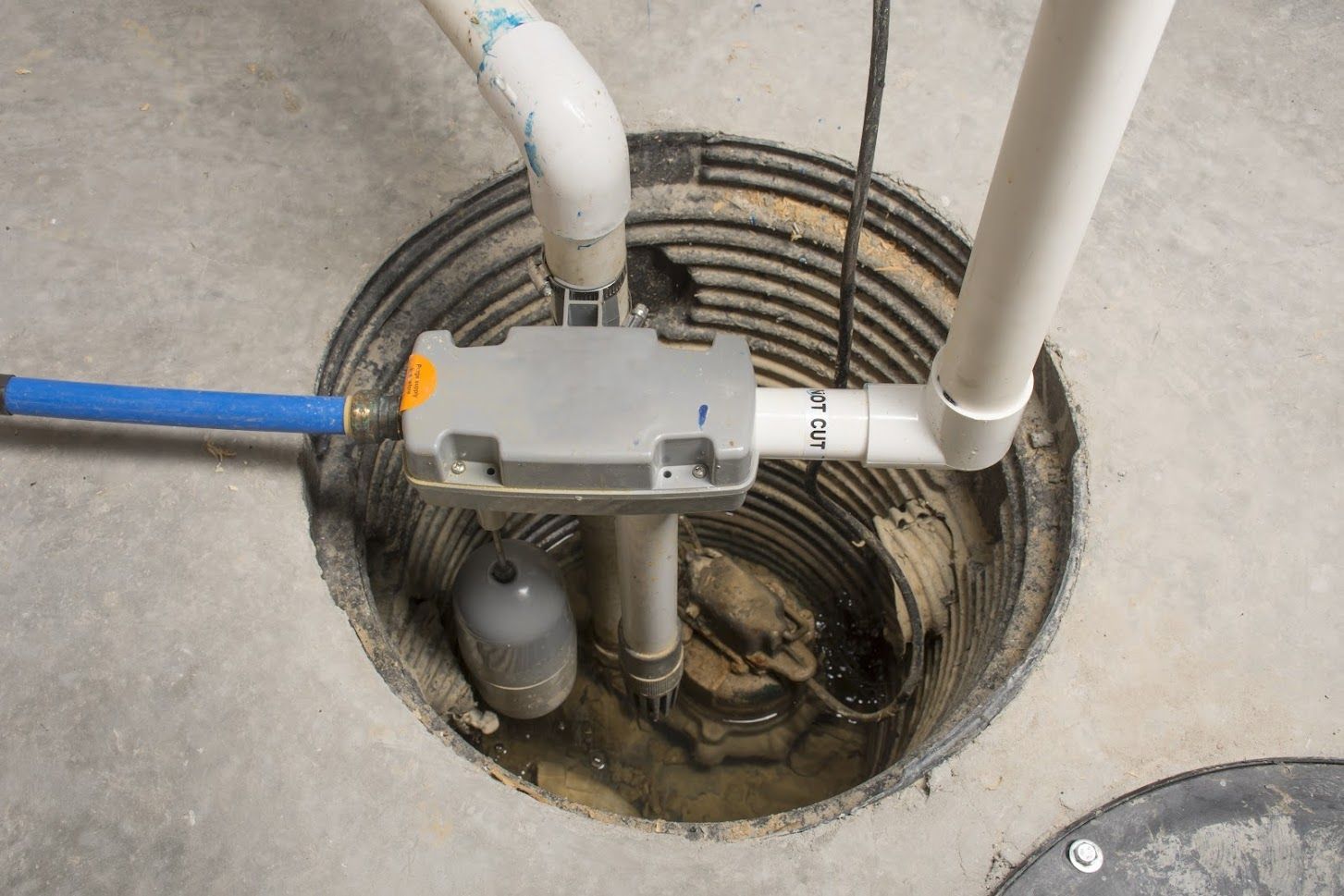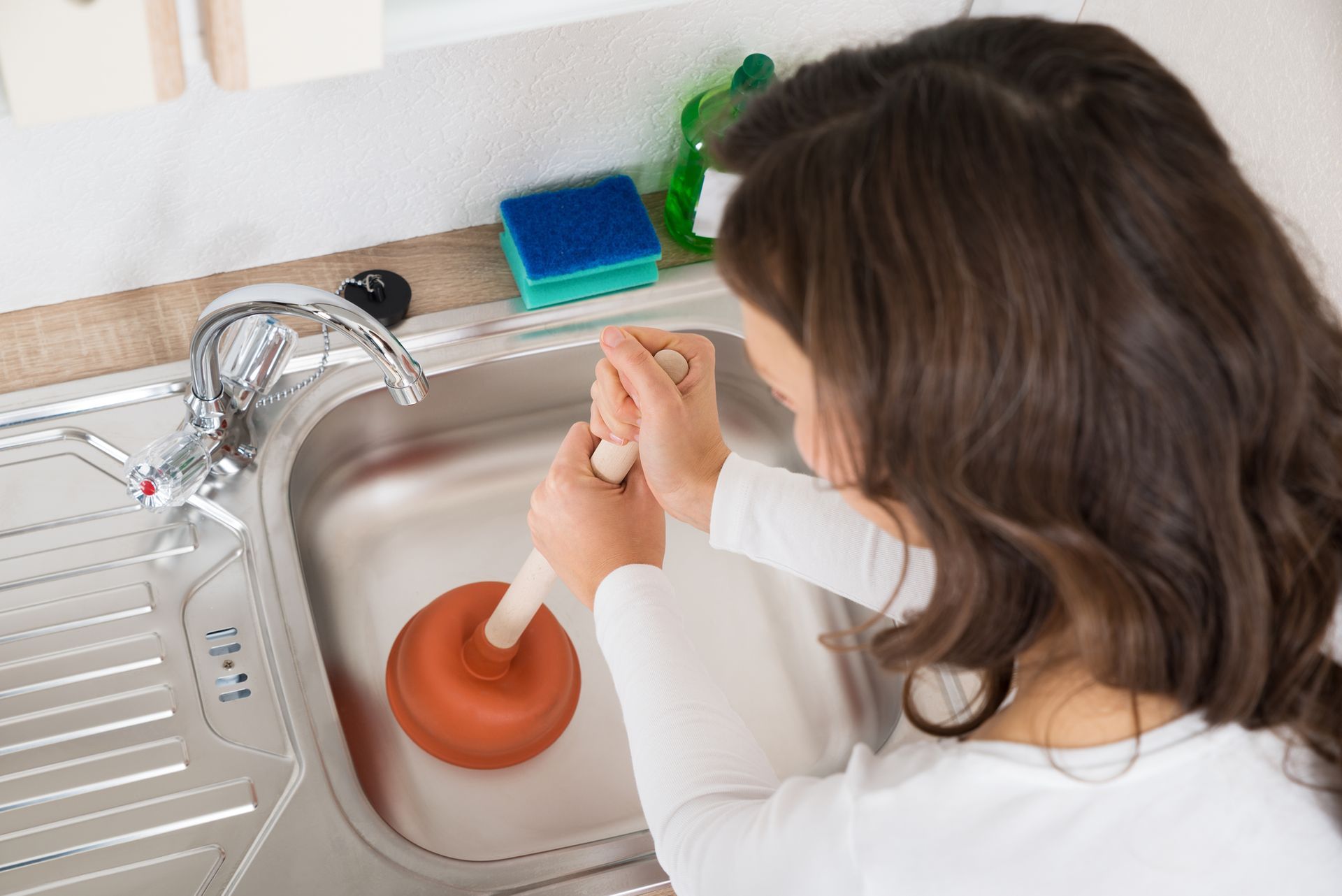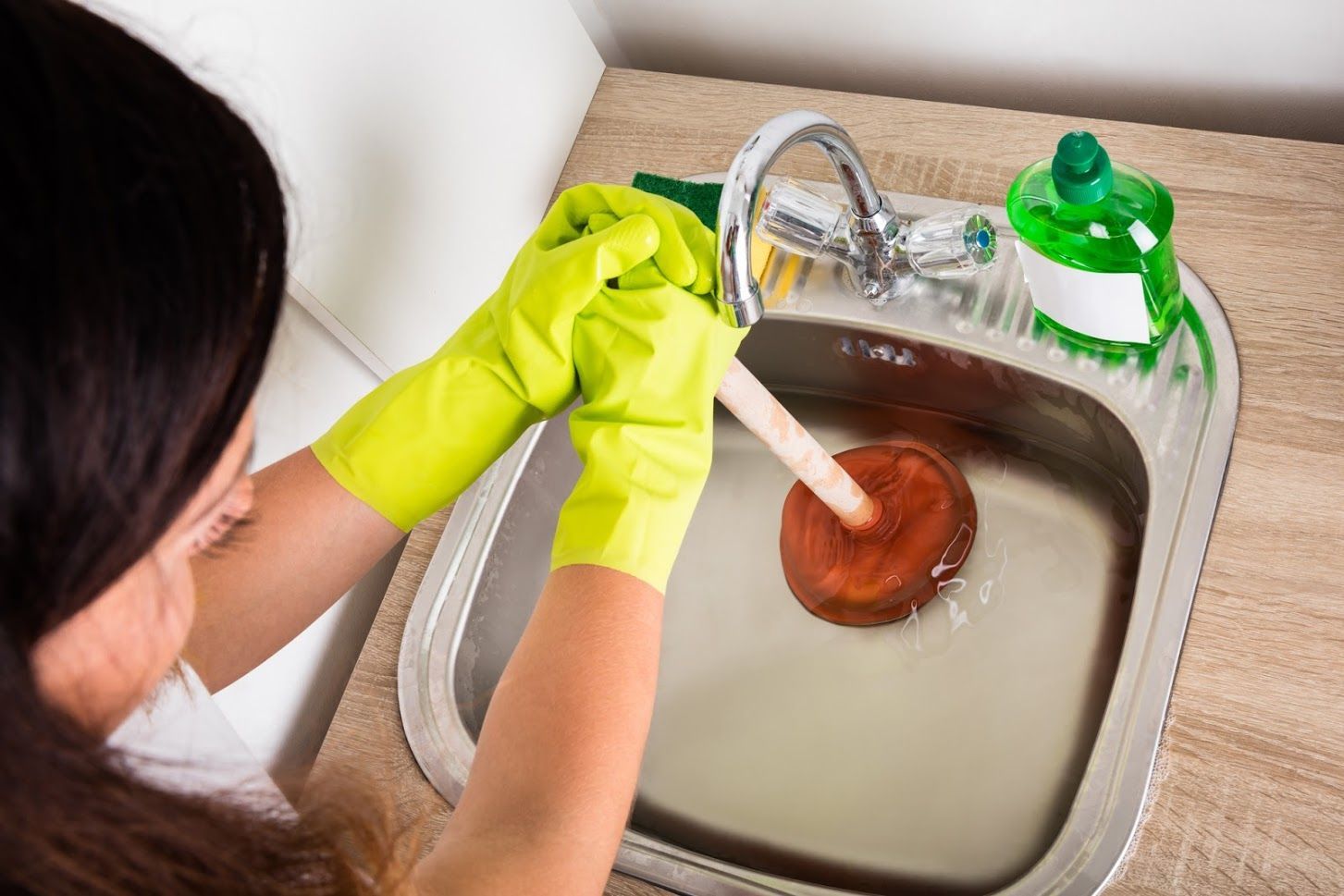Ways to Prevent Clogs in Your Utility Sink
Utility room sinks can get clogged over time, but fortunately, you can protect the drain and keep the sink functioning with a variety of tips. If you’re a homeowner who wants to keep your utility sink drain flowing, here’s what you need to know.

Flush the Drain Periodically
Prevent your utility room sink from clogging by periodically pouring vinegar into the drain and allowing it to sit for several hours. Once the vinegar has been sitting in the pipe for a long time, flush the drain with boiling hot water.
Vinegar is slightly acidic and eats away at organic material in the sink. This prevents clogs while also eliminating any odors that might come from rotting organic material in the drain.
Run Hot Water After Each Use
Just flushing your drain with hot water after each use helps prevent the drain from running slow or becoming clogged. Be sure to run hot water after flushing something down your drain like grease or oil, which could line the inside of the pipe and solidify there.
Thin It Out or Throw It Away
A lot of people will flush paint, chemicals, grout, sand, wax, and other materials down their utility room drain. Anything that is made up of solid particles, like sand or grout, should not be flushed down the drain. Throw these solids out to prevent them from becoming caught in the p-trap.
If you’re getting rid of paint, know what to throw away and what to thin down. Avoid flushing oil paint down your drain. Oil paint does not thin well with water and may cause the pipe to clog. Some amount of latex paint can be flushed down the drain, but not in significant quantities. For example, you can clean out your paintbrushes and a mostly empty paint tray by flushing the paint down the drain.
To thin out paint, run the hot water and then allow the paint to flow down the drain in small amounts. Never dump large quantities of any paint down your drain. If you must get rid of a lot of paint, like leftover paint in a can, talk to your local sanitation department to find out the best way to get this done.
Catch the Lint
Some utility room sinks are positioned right next to the washing machine, and the washing machine drains into the sink via a flexible pipe. Water that drains from the washing machine into the utility sink can carry lint in it. When the lint goes down the utility sink drain, much of it catches in the pipe and remains there, until the drain finally clogs.
You can catch the lint by attaching a net or screen to the end of the washing machine drain pipe. These screens are sock-shaped and come with a zip tie to attach the screen securely. Over time, the screen will capture so much lint that the water will squirt out in random directions, getting the wall behind the utility room sink wet. When this happens, the net is ready to be replaced.
When attaching the net to the end of the pipe, secure the zip tie so it fits snug against the pipe. If the zip tie is not completely secure, the net may come off and clog the drain.
If the time ever comes to remodel your utility room or laundry room sink, talk to your plumber about installing a pipe from the washing machine directly into the drain. This will get you out of the cycle of replacing the net periodically, which can help you maintain your utility sink.
Contact Your Plumber
If your utility room sink is not draining properly, contact your plumber. At
Quality Plumbing, we’re happy to help with any questions you might have about your utility room sink, so call today.
The post Ways to Prevent Clogs in Your Utility Sink appeared first on .








★★★★★
The total process from booking a service call, by phone, to the installation of a steel reinforced waterline hose on our refrigerator, was a pleasurable experience. A retired plumber recommended QP. Jeff had to pull out the refrigerator, remove the plastic waterline, install the new waterline, check to make sure the water dispenser was working and put the refrigerator back. Jeff was careful and mindfull of our wooden floor as the refrigerator was in a built-in cabinet. Since we live in a condo we want to eliminate all possibilities for a water leak. Jeff not only did his skillful job, he also educated us on the different water supply lines. I would recommend QP.
- Janeine G.
Button
★★★★★
Quality Plumbing did a rough-in plumbing install for a bathroom and kitchen sink in my basement. Very communicative, helped plan the space, and did a great job on the install. Will be using them again!
- Ian H.
Button
★★★★★
Called them when my water heater broke, they were over same day with a new one. Logan is great, he's fixed a couple things over the last year and is always professional and informative.
- Nick B.
Button
★★★★★
Quality plumbing is amazing 👏 when my brothers home had a problem with water pressure, they were able to schedule quickly, identify the problem and provide cost effective solutions quickly. When they did the work, they were on time on budget and cleaned up everything afterwards. Thank you for your great service Quality Plumbing! …
- Rich R.

★★★★★
Quality Plumbing is my go-to plumbing company for all my projects. I had one big project and after meeting Jeff, I’ve specifically requested him to come out for my other 2 projects. He’s incredibly punctual, efficient, and keeps the area nice and clean. Great to communicate with and provides clear answers to all my questions. Jeff is very professional and knowledgeable in his craft. Every time I call, Delaney will always pick up my phone calls and get me scheduled right away. Never had great success with plumbing companies until I started working with Quality Plumbing. They have unbeatable prices and will provide you with an honest solution to your problems. Highly recommend choosing Quality Plumbing!
- Alex D.
Button

★★★★★
The total process from booking a service call, by phone, to the installation of a steel reinforced waterline hose on our refrigerator, was a pleasurable experience. A retired plumber recommended QP. Jeff had to pull out the refrigerator, remove the plastic waterline, install the new waterline, check to make sure the water dispenser was working and put the refrigerator back. Jeff was careful and mindfull of our wooden floor as the refrigerator was in a built-in cabinet. Since we live in a condo we want to eliminate all possibilities for a water leak. Jeff not only did his skillful job, he also educated us on the different water supply lines. I would recommend QP.
- Janeine G.
Button
★★★★★
Quality Plumbing did a rough-in plumbing install for a bathroom and kitchen sink in my basement. Very communicative, helped plan the space, and did a great job on the install. Will be using them again!
- Ian H.
Button
★★★★★
Called them when my water heater broke, they were over same day with a new one. Logan is great, he's fixed a couple things over the last year and is always professional and informative.
- Nick B.
Button
★★★★★
Quality plumbing is amazing 👏 when my brothers home had a problem with water pressure, they were able to schedule quickly, identify the problem and provide cost effective solutions quickly. When they did the work, they were on time on budget and cleaned up everything afterwards. Thank you for your great service Quality Plumbing! …
- Rich R.

★★★★★
Quality Plumbing is my go-to plumbing company for all my projects. I had one big project and after meeting Jeff, I’ve specifically requested him to come out for my other 2 projects. He’s incredibly punctual, efficient, and keeps the area nice and clean. Great to communicate with and provides clear answers to all my questions. Jeff is very professional and knowledgeable in his craft. Every time I call, Delaney will always pick up my phone calls and get me scheduled right away. Never had great success with plumbing companies until I started working with Quality Plumbing. They have unbeatable prices and will provide you with an honest solution to your problems. Highly recommend choosing Quality Plumbing!
- Alex D.
Button








